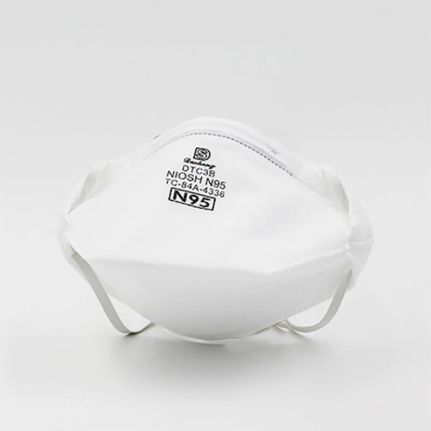Respiratory Face Masks: What You Need to Know

The novel coronavirus that emerged in China has spread across the world. You may have heard a lot about the use of respiratory face masks to prevent infection. Here we have discussed such masks in detail and tried to tell everything you should know about them.
Types of face masks
There are three types of face masks for COVID-19 prevention. They are
- Homemade face masks
- Surgical masks
- N95 respirator
Homemade face masks – they offer a small degree of protection and can help prevent the spreading of SARS-CoV-2 from asymptomatic people. The CDC recommends the use of homemade face masks; follow social distancing and proper hygiene to prevent the spreading of the respiratory disease.
Surgical Masks
A surgical mask is a disposable, loose-fitting device that creates a physical barrier between the nose and mouth of the wearer and potential contaminants in the immediate environment. These masks are labeled as a dental, medical procedure, isolation, or surgical masks. There are different types of surgical masks and some have a face shield while some don’t.
Surgical masks are under 21 CFR 878.4040. They are referred to as face masks but not all face masks are regulated as surgical masks. Surgical masks are manufactured with different thickness and hence they have a different ability to protect you from contact with liquids. The properties of the surgical mask determine how well it can protect and how easily you can breathe through the mask.
You need to wear surgical masks in the right way to help block large-particle droplets, splatter, sprays, or splashes that may contain viruses and bacteria and prevent them from reaching your nose and mouth. Surgical masks are also effective in reducing your exposure to respiratory secretions and saliva to others.
Surgical masks may not offer you the best protection against infection with SARS-CoV-2. The mask does not filter out small aerosol particles. The loose-fitting of the masks also increases the chances of an air leakage that occurs through the sides of the masks you inhale.
A surgical mask is not intended to be used more than once. If the mask is soiled, damaged and you experience difficulty in breathing, you should discard the mask and use a new one. You should follow safe disposal instructions when disposing of surgical masks and wash your hands with soap after discarding surgical masks in the trash.
N95 Respirators
The N95 respirators can provide you good protection against infection with SARS-CoV-2. It can protect the wearer from small respiratory droplets such as those containing SARS-CoV-2. The N95 respirator is designed to achieve a very close facial fit and the mask is highly effective in filtering airborne particles.
A respiratory face mask that is designated “N95” generally means the respiratory devices are subjected to careful testing. The N95 face mask can block 95% of very small micron particles measuring 0.3 microns. If the N95 respirator is properly fitted on the face of the wearer, its filtration capabilities surpass other face masks by a higher degree.
Currently, the CDC doesn’t recommend the use of N95 respirators outside of healthcare settings. Here are some reasons for not using them outside healthcare settings.
- An N95 respirator should be fit-tested to achieve maximum efficiency and protection. A poor seal can lead to leakage and lower the effectiveness of this respiratory device.
- The supply of N95 respirator is limited and the demand for these masks is huge due to coronavirus pandemic spreading across the world. Hence, it is understandable the first responders and the healthcare workers who are at more risk of infection with SARS-CoV-2 need to have ready access to such protective respiratory devices.
How to use respiratory face masks to prevent infection with SARS-CoV-2?
Respiratory face masks can only help in trapping infectious respiratory secretions.
- Wash your hands with sanitizer or soap before handling the mask
- Make sure the mask does not have any tears or holes
- Orient the mask so that colored side faces outward
- The metal strip should rest on your nose for a good fit
- Ensure the mask covers your nose and mouth completely
- Loop the elastic bands behind your ears for a good fit.
Do you’ve any questions?




